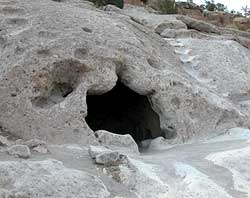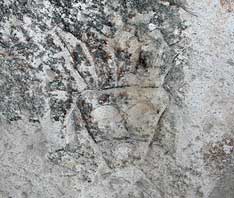Tsankawi | Tsankawi Cave Dwellings | Tsankawi Petroglyphs
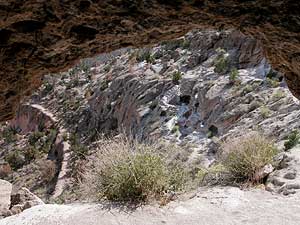
Tsankawi Cave Dwellings
The ancient pueblo inhabitants of Tsankawi not only had a settlement on top of the mesa, but built their homes along the base of the cliffs. They dug caves into the soft tuff stone and extended the dwelling with walls made of talus rock mortered with mud. (Talus are the loose stones found at the base of a cliff.) The roofs were made with timber and mud. These dwellings are called talus pueblos.
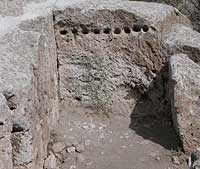 |
| Tsankawi Dwelling with visible socket holes used to hold ceiling timbers. |
It is interesting to note that the talus pueblos were built on the south facing side of the mesas. During winter months the afternoon sun would warm the southern cliffs melting the snow, but the northern facing cliffs frequently had snow all winter long. Imagine what it must have been like to live in the talus pueblos during the long winter months. In this arid environment firewood was scarse, and the fires that were built left the rooms full of smoke.
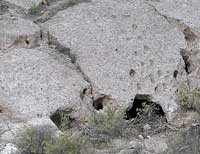 Exploration of the caves is one of the delightful experience of the
Tsankawi hike, but caution must be used not to touch the structures as
this can cause harmful deteoration. The roofs of the caves
are blackened with soot. The walls were frequently plastered with
clay perhaps for aesthetic reasons or to help prevent the walls from
crumbling. Artwork along the walls can be seen in a number of the
caves in the form of pictographs carved into the rock and painting
reminants where clay still sticks to the walls. The cave shown to the
left contains a snake like structure (below) carved into the wall.
Exploration of the caves is one of the delightful experience of the
Tsankawi hike, but caution must be used not to touch the structures as
this can cause harmful deteoration. The roofs of the caves
are blackened with soot. The walls were frequently plastered with
clay perhaps for aesthetic reasons or to help prevent the walls from
crumbling. Artwork along the walls can be seen in a number of the
caves in the form of pictographs carved into the rock and painting
reminants where clay still sticks to the walls. The cave shown to the
left contains a snake like structure (below) carved into the wall.
Large Dwelling Complex
In its day, this must have been a fairly elaborate dwelling and storage structure of the Tsankawi Indians. The caves were on multiple levels and the dwellings would have extended out with out with walls built out of talus brick. Timbers were used for floors and ceilings. This is also one of the few places where a partial talus brick wall is still standing. Worn steps can be seen leading to the top on the lefthand side. Today the complex has become quite fragile and the caves should not be entered.The top row of pictures shows an overall view of the complex with one of the caves and a detailed view of a petroglyph within the cave. The second row shows another cave that was built on multiple levels and a cave with a partial talus wall.
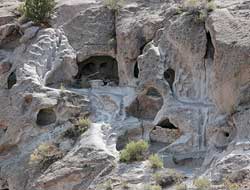
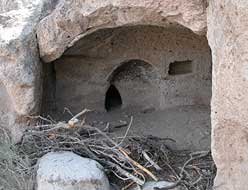
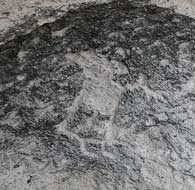
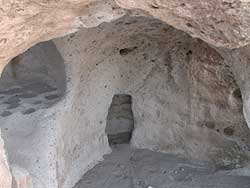

Feathered Human Cave Figure
This dwelling has steps worn into the rock on the outside of the cave. It also has a petroglyph of a human figure with feathers on the inside.

